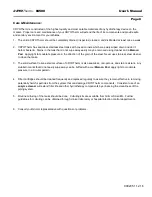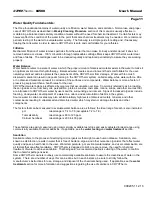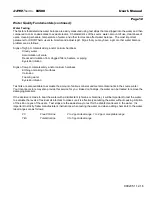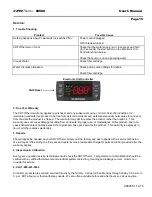
CRYO
Therm
#4500 User’s Manual
Page 12
090205.1.12.16
Water Quality Fundamentals (continued):
Water Testing
The factors that determine water balance are easily measured using test strips that are dipped into the water and then
compared to color coded scales to evaluate levels. Characteristics of the source water, amount of use, cleanliness of
users, cleaning schedule, temperature of water, and other factors can affect water balance. The most important
parameter for CRYOTherm users to monitor and adjust is pH. Signs that you may have a pH or other water balance
problem are as follows:
Signs of high pH, total alkalinity, and/or calcium hardness
-
Cloudy water
-
Accumulation of scale
-
Reduced circulation from clogged filters, heaters, or piping
-
Eye/skin irritation
Signs of low pH, total alkalinity, and/or calcium hardness
-
Etching or staining of surfaces
-
Corrosion
-
Foaming water
-
Eye/skin irritation
Test kits are also available to evaluate the amount of various mineral and metal contaminants in the source water.
Your local pool store may also provide this service for you. Based on findings, the water can be treated to remove the
damaging materials.
If the decision is made to treat the water with a disinfectant (chlorine or bromine), it will be important to test the water
to evaluate the levels of residual disinfectant to make sure it is effectively sanitizing the water without causing irritation
of the skin or eyes of the users. Test strips are the easiest way to test for the disinfectant levels in the water. It is
important to strictly follow man
ufacturer’s instructions when testing the water and when adding chemicals to the water.
Ideal ranges are as follows:
-
FC
Free Chlorine
2 to 4 ppm ideal range, 1 to 4 ppm acceptable range
-
TBr
Total Bromine
3 to 5 ppm ideal range


























